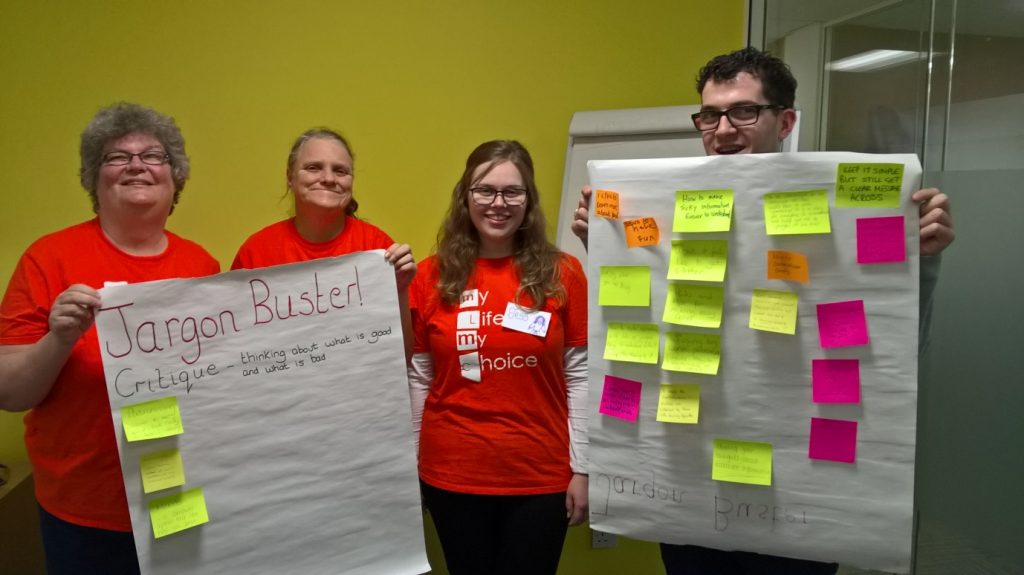Learning from the experts: People with learning disabilities run easy read training
Emily Prior, Communications and Engagement Manager at NHS England (South), blogs about the importance of communicating accessibly.
I recently hosted a training day for health and social care colleagues from Transforming Care Partnerships across the south of England. We came together to master the art of producing easy read material – created specifically to help people with a learning disability understand information easily.
Providing easily accessible communications is a Transforming Care Programme priority so we asked My Life My Choice to show us the ropes.
The training day taught attendees ‘how to’ while also offering an opportunity to really reflect on and think carefully about how we as individuals, Transforming Care Partnerships and wider health and social care communities, communicate – often not in an accessible way, particularly for individuals with a learning disability, autism or both.
Left to right: Dawn, Pam, Jess and Tommy from My Life My Choice
Kicking off with a game of If I Ruled the World* tested our memory and people skills, but also challenged any preconceptions or social expectations around having to get things right first time round. Dawn explained: “It is ok to take your time, make mistakes and get things wrong. Producing easy read is often trial and error, what works for one person might not be right for another.”
Jess Tilling, Power Up Co-ordinator supporting the session, confirmed: “There is no one right way to communicate accessibly. Different people require different methods of communication. Easy read is one of many ways you can try and ensure the person receiving your communication understands what you are trying to tell them.”
Mencap’s guideline for accessible writing – Am I making myself clear? – is a useful place to start when producing an easy read document. Another good resource and a personal favourite of Pam’s is Easy Health. Other useful tips include:
- Size 16 font or bigger
- Use a simple, clear font
- Stick to the same format throughout – picture on the left and copy on the right or the other way round
- Use short sentences and avoid punctuation
- Use colour pictures – some people rely on colour to help understand so avoid black and white
- Highlight single, important words in bold (black not colour)
Easy read training will help us meet our legal duty to communicate accessibly, which is vital given as of the 1st August 2016; all organisations that provide NHS care or adult social care are legally required to follow the Accessible Information Standard.
The standard aims to make sure that people who have a disability, impairment or sensory loss are provided with information that they can easily read or understand and with support so they can communicate effectively with health and social care services.
*If I Ruled the World is a game whereby the first person in the circle announces their name and has to make a statement about what they would do if they ruled the world.
For example: Person A – ‘My name’s Bob and if I ruled the world, I would give everyone cake.’
The second person then has to say: Person B – ‘His name’s Bob and if he ruled the world he would give everyone cake. My name is Amy and if I ruled the world I would eliminate world poverty.’

